#gravitational lensing phenomenon
Explore tagged Tumblr posts
Text
Ask A Genius 1061: The Hindemburg Melão Jr. Session 2, More on Dark Matter and Collapsed Matter
Scott Douglas Jacobsen: Hindemburg Melão Jr. further asks, “Regarding the answer about dark matter, the evidence suggests different properties than what would result from the collapse of baryonic or leptonic matter objects. For example: gravitational effects (produced by dark matter) are very spread out, rather than concentrated, as would be natural if it was generated from the collapses of…
#aged matter halo#alternative space geometry explanations#gravitational force theories#gravitational lensing phenomenon#inverse-square law#rotational velocities of galaxies#sophisticated understanding of physics#well-distributed collapsed matter
0 notes
Text
Caution: Universe Work Ahead 🚧
We only have one universe. That’s usually plenty – it’s pretty big after all! But there are some things scientists can’t do with our real universe that they can do if they build new ones using computers.
The universes they create aren’t real, but they’re important tools to help us understand the cosmos. Two teams of scientists recently created a couple of these simulations to help us learn how our Nancy Grace Roman Space Telescope sets out to unveil the universe’s distant past and give us a glimpse of possible futures.
Caution: you are now entering a cosmic construction zone (no hard hat required)!
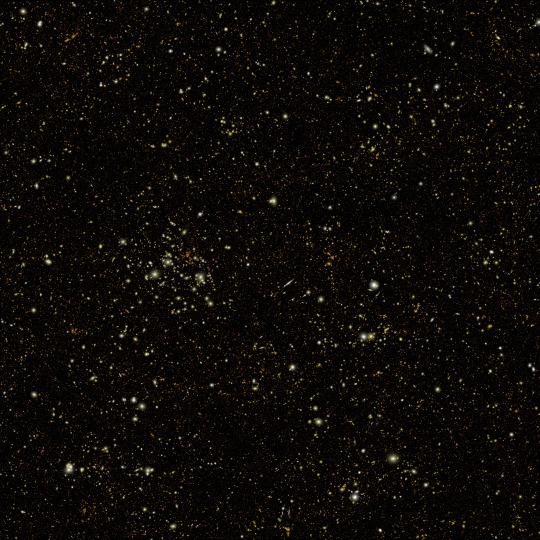
This simulated Roman deep field image, containing hundreds of thousands of galaxies, represents just 1.3 percent of the synthetic survey, which is itself just one percent of Roman's planned survey. The full simulation is available here. The galaxies are color coded – redder ones are farther away, and whiter ones are nearer. The simulation showcases Roman’s power to conduct large, deep surveys and study the universe statistically in ways that aren’t possible with current telescopes.
One Roman simulation is helping scientists plan how to study cosmic evolution by teaming up with other telescopes, like the Vera C. Rubin Observatory. It’s based on galaxy and dark matter models combined with real data from other telescopes. It envisions a big patch of the sky Roman will survey when it launches by 2027. Scientists are exploring the simulation to make observation plans so Roman will help us learn as much as possible. It’s a sneak peek at what we could figure out about how and why our universe has changed dramatically across cosmic epochs.
youtube
This video begins by showing the most distant galaxies in the simulated deep field image in red. As it zooms out, layers of nearer (yellow and white) galaxies are added to the frame. By studying different cosmic epochs, Roman will be able to trace the universe's expansion history, study how galaxies developed over time, and much more.
As part of the real future survey, Roman will study the structure and evolution of the universe, map dark matter – an invisible substance detectable only by seeing its gravitational effects on visible matter – and discern between the leading theories that attempt to explain why the expansion of the universe is speeding up. It will do it by traveling back in time…well, sort of.
Seeing into the past
Looking way out into space is kind of like using a time machine. That’s because the light emitted by distant galaxies takes longer to reach us than light from ones that are nearby. When we look at farther galaxies, we see the universe as it was when their light was emitted. That can help us see billions of years into the past. Comparing what the universe was like at different ages will help astronomers piece together the way it has transformed over time.
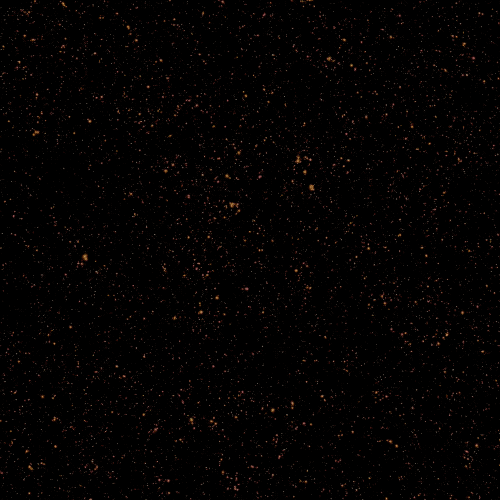
This animation shows the type of science that astronomers will be able to do with future Roman deep field observations. The gravity of intervening galaxy clusters and dark matter can lens the light from farther objects, warping their appearance as shown in the animation. By studying the distorted light, astronomers can study elusive dark matter, which can only be measured indirectly through its gravitational effects on visible matter. As a bonus, this lensing also makes it easier to see the most distant galaxies whose light they magnify.
The simulation demonstrates how Roman will see even farther back in time thanks to natural magnifying glasses in space. Huge clusters of galaxies are so massive that they warp the fabric of space-time, kind of like how a bowling ball creates a well when placed on a trampoline. When light from more distant galaxies passes close to a galaxy cluster, it follows the curved space-time and bends around the cluster. That lenses the light, producing brighter, distorted images of the farther galaxies.
Roman will be sensitive enough to use this phenomenon to see how even small masses, like clumps of dark matter, warp the appearance of distant galaxies. That will help narrow down the candidates for what dark matter could be made of.

In this simulated view of the deep cosmos, each dot represents a galaxy. The three small squares show Hubble's field of view, and each reveals a different region of the synthetic universe. Roman will be able to quickly survey an area as large as the whole zoomed-out image, which will give us a glimpse of the universe’s largest structures.
Constructing the cosmos over billions of years
A separate simulation shows what Roman might expect to see across more than 10 billion years of cosmic history. It’s based on a galaxy formation model that represents our current understanding of how the universe works. That means that Roman can put that model to the test when it delivers real observations, since astronomers can compare what they expected to see with what’s really out there.
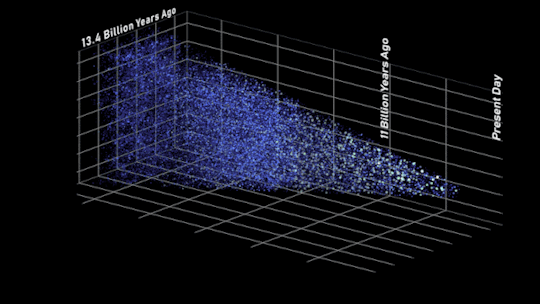
In this side view of the simulated universe, each dot represents a galaxy whose size and brightness corresponds to its mass. Slices from different epochs illustrate how Roman will be able to view the universe across cosmic history. Astronomers will use such observations to piece together how cosmic evolution led to the web-like structure we see today.
This simulation also shows how Roman will help us learn how extremely large structures in the cosmos were constructed over time. For hundreds of millions of years after the universe was born, it was filled with a sea of charged particles that was almost completely uniform. Today, billions of years later, there are galaxies and galaxy clusters glowing in clumps along invisible threads of dark matter that extend hundreds of millions of light-years. Vast “cosmic voids” are found in between all the shining strands.
Astronomers have connected some of the dots between the universe’s early days and today, but it’s been difficult to see the big picture. Roman’s broad view of space will help us quickly see the universe’s web-like structure for the first time. That’s something that would take Hubble or Webb decades to do! Scientists will also use Roman to view different slices of the universe and piece together all the snapshots in time. We’re looking forward to learning how the cosmos grew and developed to its present state and finding clues about its ultimate fate.
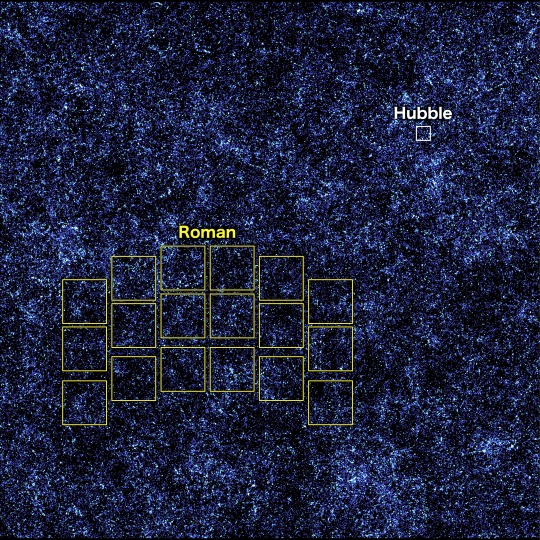
This image, containing millions of simulated galaxies strewn across space and time, shows the areas Hubble (white) and Roman (yellow) can capture in a single snapshot. It would take Hubble about 85 years to map the entire region shown in the image at the same depth, but Roman could do it in just 63 days. Roman’s larger view and fast survey speeds will unveil the evolving universe in ways that have never been possible before.
Roman will explore the cosmos as no telescope ever has before, combining a panoramic view of the universe with a vantage point in space. Each picture it sends back will let us see areas that are at least a hundred times larger than our Hubble or James Webb space telescopes can see at one time. Astronomers will study them to learn more about how galaxies were constructed, dark matter, and much more.
The simulations are much more than just pretty pictures – they’re important stepping stones that forecast what we can expect to see with Roman. We’ve never had a view like Roman’s before, so having a preview helps make sure we can make the most of this incredible mission when it launches.
Learn more about the exciting science this mission will investigate on Twitter and Facebook.
Make sure to follow us on Tumblr for your regular dose of space!
#NASA#astronomy#telescope#Roman Space Telescope#dark matter#galaxies#cosmology#astrophysics#stars#galaxy#Hubble#Webb#spaceblr
2K notes
·
View notes
Text

The European Space Agency’s Euclid space telescope has captured a rare Einstein ring around the elliptical galaxy NGC 6505, located 590 million light-years away. This cosmic phenomenon, caused by gravitational lensing, occurs when a massive object like NGC 6505 bends and magnifies light from a distant galaxy behind it.
Named after Albert Einstein, these rings are incredibly rare, with fewer than a handful discovered since 1987. They provide crucial insights into dark matter, distant galaxies, and the universe’s expansion, making them invaluable tools for unraveling the mysteries of the cosmos.
#general knowledge#affairsmastery#generalknowledge#current events#current news#upscaspirants#upsc#generalknowledgeindia#world news#breaking news#news#technology#european union#european news#european space agency#galaxy#planet#astronomy#galaxies#space#albert einstein#cosmic#outer space#planets#stars#dark matter#universe#alternate universe#nasa#isro
9 notes
·
View notes
Text
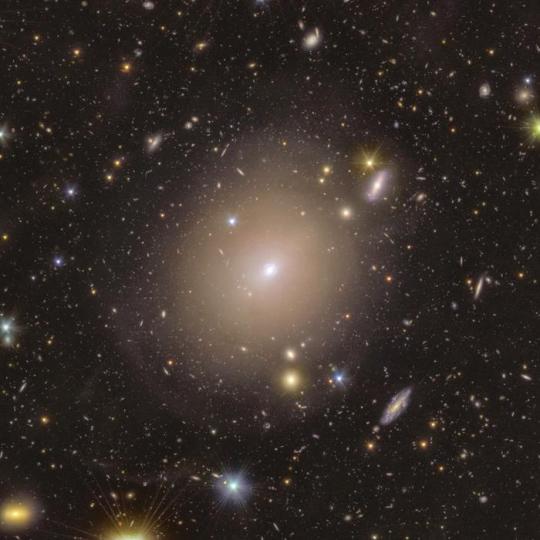
Euclid discovers a stunning Einstein ring
FacebookXLinkedInWeChatBlueskyMessageWhatsAppEmail
image:
The ring of light surrounding the centre of the galaxy NGC 6505, captured by ESA’s Euclid telescope, is a stunning example of an Einstein ring. NGC 6505 is acting as a gravitational lens, bending light from a galaxy far behind it. The almost perfect alignment of NGC 6505 and the background galaxy has bent and magnified the light from the background galaxy into a spectacular ring. This rare phenomenon was first theorised to exist by Einstein in his general theory of relativity. This wide field shows the extended stellar halo of NGC 6505 and showcases the Einstein ring, surrounded by colourful foreground stars and background galaxies. view more
Credit: ESA/Euclid/Euclid Consortium/NASA, image processing by J.-C. Cuillandre, T. Li
Euclid blasted off on its six-year mission to explore the dark Universe on 1 July 2023. Before the spacecraft could begin its survey, the team of scientists and engineers on Earth had to make sure everything was working properly. During this early testing phase, in September 2023, Euclid sent some images back to Earth. They were deliberately out of focus, but in one fuzzy image Euclid Archive Scientist Bruno Altieri saw a hint of a very special phenomenon and decided to take a closer look.
“I look at the data from Euclid as it comes in,” explains Bruno. “Even from that first observation, I could see it, but after Euclid made more observations of the area, we could see a perfect Einstein ring. For me, with a lifelong interest in gravitational lensing, that was amazing.”
The Einstein Ring, an extremely rare phenomenon, turned out to be hiding in plain sight in a galaxy not far away. The galaxy, called NGC 6505, is around 590 million light-years from Earth, a stone’s throw away in cosmic terms. But this is the first time that the ring of light surrounding its centre is detected, thanks to Euclid’s high-resolution instruments.
The ring around the foreground galaxy is made up of light from a farther out bright galaxy. This background galaxy is 4.42 billion light-years away, and its light has been distorted by gravity on its way to us. The far-away galaxy hasn’t been observed before and doesn’t yet have a name.
“An Einstein ring is an example of strong gravitational lensing,” explains Conor O’Riordan, of the Max Planck Institute for Astrophysics, Germany, and lead author of the first scientific paper analysing the ring. “All strong lenses are special, because they're so rare, and they're incredibly useful scientifically. This one is particularly special, because it’s so close to Earth and the alignment makes it very beautiful.”
Albert Einstein’s general theory of relativity predicts that light will bend around objects in space, so that they focus the light like a giant lens. This gravitational lensing effect is bigger for more massive objects – galaxies and clusters of galaxies. It means we can sometimes see the light from distant galaxies that would otherwise be hidden.
If the alignment is just right, the light from the distant source galaxy bends to form a spectacular ring around the foreground object. These Einstein rings are a rich laboratory for scientists. Studying their gravitational effects can help us learn about the expansion of the Universe, detect the effects of invisible dark matter and dark energy, and investigate the background source whose light is bent by dark matter in between us and the source.
“I find it very intriguing that this ring was observed within a well-known galaxy, which was first discovered in 1884,” says Valeria Pettorino, ESA Euclid Project Scientist. “The galaxy has been known to astronomers for a very long time. And yet this ring was never observed before. This demonstrates how powerful Euclid is, finding new things even in places we thought we knew well. This discovery is very encouraging for the future of the Euclid mission and demonstrates its fantastic capabilities.”
By exploring how the Universe has expanded and formed over its cosmic history, Euclid will reveal more about the role of gravity and the nature of dark energy and dark matter. The space telescope will map more than a third of the sky, observing billions of galaxies out to 10 billion light-years. It is expected to find around 100 000 strong lenses, but to find one that’s so spectacular – and so close to home – is astonishing. Until now, less than 1000 strong lenses were known, and even fewer were imaged at high resolution.
“Euclid is going to revolutionise the field, with all this data we've never had before,” adds Conor.
Although this Einstein ring is stunning, Euclid’s main job is searching for the more subtle effects of weak gravitational lensing, where background galaxies appear only mildly stretched or displaced. To detect this effect, scientists will need to analyse billions of galaxies. Euclid began its detailed survey of the sky on 14 February 2024 and is gradually creating the most extensive 3D map of the Universe yet. Such an amazing find, so early in its mission, means Euclid is on course to uncover many more hidden secrets.
Journal
TOP IMAGE: The ring of light surrounding the centre of the galaxy NGC 6505, captured by ESA’s Euclid telescope, is a stunning example of an Einstein ring. NGC 6505 is acting as a gravitational lens, bending light from a galaxy far behind it. The almost perfect alignment of NGC 6505 and the background galaxy has bent and magnified the light from the background galaxy into a spectacular ring. This rare phenomenon was first theorised to exist by Einstein in his general theory of relativity. This wide field shows the extended stellar halo of NGC 6505 and showcases the Einstein ring, surrounded by colourful foreground stars and background galaxies. Credit ESA/Euclid/Euclid Consortium/NASA, image processing by J.-C. Cuillandre, T. Li
LOWER IMAGE: When we observe a distant galaxy with our telescope, its light may encounter another galaxy on its way to us. The foreground galaxy acts like a magnifying lens, bending the travelling light rays due to its gravity. This is called gravitational lensing. If the background galaxy, the lensing galaxy, and the telescope are perfectly aligned, the image appears as a ring – called an Einstein ring. Einstein rings were first theorised to exist by Einstein in his general theory of relativity. Credit ESA
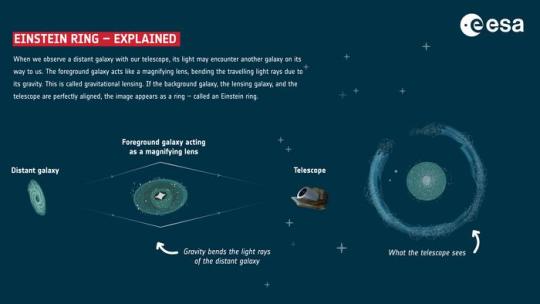
5 notes
·
View notes
Text
Did you guys know that there was a star discovered in 2022 named Earendel?
It's the furthest star from us that is named and it's so far that due to the speed of light, we are currently observing it as it was within just a billion years from the Big Bang!
We can see it due to gravitational lensing, which is the phenomenon caused by massive objects as they warp the fabric of spacetime around them (think like you're putting something heavy onto a thin stretched rubber sheet). This magnifies the object through bending of light and allows us to see it!
I think it's wild that we can see something so far, and it is so heartwarming that these new discoveries are named after stories so beloved by so many people. It just makes me so happy!
39 notes
·
View notes
Text
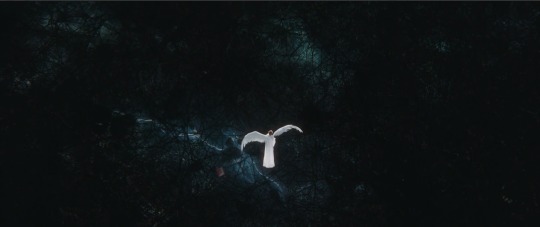
The very first scene from Good Omens S2: Angel Crowley in the middle of the cosmic web
A guide to the creation of the universe: from Crowley Starmaker to space missions - part 2
A look at the history of our universe, following the opening scene of the second series of Good Omens.
This analysis was originally written for a very special event that took place last November, which marked a milestone in the history of astronomy! Part 1 here - Read the next part here.
II: Dark matter and dark energy
A discussion on some of universe's intrinsic components - dark matter and dark energy - and the role they play in its expansion.
Returning for a moment to the very first scene of season two, in the image posted here, we see Crowley, in his angelic version, amidst a structure resembling the meshes of a web.
This structure is called the Cosmic Web, and is a trace left by the Big Bang; it not only connects all the galaxies in the universe, but also helps to create them. The Cosmic Web is made up of filaments of hydrogen and dark matter, which we will discuss in a moment; its reticular shape is due to the interaction of gas and dark matter with gravitational forces.
The galaxies that form are also subject to gravitational attraction, which is why they coalesce into larger and larger clusters at the nodes of the cosmic web, where more filaments meet.
WHAT IS THE DARK MATTER?
Everything in our universe is composed of matter, i.e. something that occupies space and has mass. Specifically, ‘normal’ matter, the kind we deal with every day, is composed of atomic particles, i.e. protons, neutrons and electrons, and can exist in a solid, liquid, gaseous or plasma state. We can see it, we can touch it, we can measure various characteristics of it. It is obvious to us that it exists, because we touch it every day or perceive it with instruments, such as telescopes and microscopes. Above all, normal matter can absorb and reflect different frequencies of light. This is the phenomenon at the basis of our perception of colours and allows us to deduce characteristics about celestial bodies far away from us, such as their gradual receding, which has allowed us to elaborate theories on the expansion of the Universe.
Dark' matter, on the other hand, owes its name to the fact that it does not interact with light in any way: it does not reflect it, absorb it or emit it, not at levels measurable by us, at least. But we do know that it has mass and occupies space, thanks to indirect observations.
The first to suggest that galaxies might be made up of something not directly visible was the astronomer Fritz Zwicky, who in the 1930s, while observing the constellation Chioma, noticed a discrepancy between the visible mass and the mass calculated from the velocity of the galaxies within it.
Further evidence came in the 1970s from the astronomer Vera Rubin, who noticed that the stars at the edge of galaxies were moving at the same speed as those at the centre, not slower, as her calculations had suggested. Vera's hypothesis was that galaxies are literally surrounded by a halo of dark matter, so that the distribution of matter within them is uniform.
The observation of gravitational lensing under anomalous conditions also gives us clues to the presence of dark matter. Gravitational lensing occurs when a celestial body is so massive that it exerts a strong gravitational pull that can alter the trajectory of light passing close to it, bending it like an optical lens.
This phenomenon has also been observed in the vicinity of celestial bodies that would not have a mass large enough to produce it, so cosmologists believe that their true masses are far greater than those detected by telescopes.
To date, scientists estimate that the Universe is made up of only 5% normal matter and about 27% dark matter. The remaining 68% would be dark energy.
WHAT IS THE DARK ENERGY?
If we know little about dark matter, we know virtually nothing about dark energy. Its existence is purely theoretical: 'dark energy' is the name given to the force that creates a negative pressure in the universe, causing it to expand at an ever-increasing rate.
Scientists have formulated two hypotheses according to which dark energy could have both a constant density and a density that varies in time and space; it should fill empty space and interact only with the force of gravity. The most common justification among physicists and cosmologists is that it is an energy intrinsic to the physical vacuum: where one exists, the other also exists.
In the next chapter, we're going to continue exploring our Universe. Next stop: the Big Bang.
More infos at:
_ Building Blocks - NASA Science
_ Fritz Zwicky and the Existence of Dark Matter | SciHi Blog
_ Shining a Light on Dark Matter - NASA Science
_ Gravitational lens - Wikipedia
_ Dark matter - Wikipedia
_ Dark energy - Wikipedia
Read this post on AO3
Subscribe to my series: The Nice and Accurate Good Omens Analysis and The Science behind Good Omens
Find me on Facebook
#good omens#good omens s2#good omens s2 spoilers#angel crowley#starmakercrowley#starmaker#nebula#astronomy#space#outer space#good omens science#good omens analysis#stars#angel aziraphale
4 notes
·
View notes
Text

In the center of this image, taken with the NASA/ESA Hubble Space Telescope, is the galaxy cluster SDSS J1038+4849 — and it seems to be smiling.
You can make out its two orange eyes and white button nose. In the case of this “happy face”, the two eyes are very bright galaxies and the misleading smile lines are actually arcs caused by an effect known as strong gravitational lensing.
Galaxy clusters are the most massive structures in the Universe and exert such a powerful gravitational pull that they warp the spacetime around them and act as cosmic lenses which can magnify, distort and bend the light behind them. This phenomenon, crucial to many of Hubble’s discoveries, can be explained by Einstein’s theory of general relativity.
In this special case of gravitational lensing, a ring — known as an Einstein Ring — is produced from this bending of light, a consequence of the exact and symmetrical alignment of the source, lens and observer and resulting in the ring-like structure we see here.
Hubble has provided astronomers with the tools to probe these massive galaxies and model their lensing effects, allowing us to peer further into the early Universe than ever before. This object was studied by Hubble’s Wide Field and Planetary Camera 2 (WFPC2) and Wide Field Camera 3 (WFC3) as part of a survey of strong lenses.
A version of this image was entered into the Hubble’s Hidden Treasures image processing competition by contestant Judy Schmidt.
26 notes
·
View notes
Text
Scientists find 14 new transient objects in space by peering through a galaxy “magnifying glass” - Technology Org
New Post has been published on https://thedigitalinsider.com/scientists-find-14-new-transient-objects-in-space-by-peering-through-a-galaxy-magnifying-glass-technology-org/
Scientists find 14 new transient objects in space by peering through a galaxy “magnifying glass” - Technology Org
An international team of scientists, led by University of Missouri’s Haojing Yan, used NASA’s James Webb Space Telescope (JWST) to discover 14 new transient objects during their time-lapse study of galaxy cluster MACS0416 — located about 4.3 billion light years from Earth — which they’ve dubbed as the “Christmas Tree Galaxy Cluster.”
Image of galaxy cluster MACS0416 captured in visible light by Hubble’s ACS and WFC3 and in infrared light by Webb’s NIRCam, with compass arrows, scale bar, and color key for reference. Image credit: NASA
“Transients are objects in space, like individual stars, that appear to brighten by orders of magnitudes and then fade away suddenly,” said Yan, an associate professor in the Department of Physics and Astronomy. “These transient objects appear bright for only a short period of time and then are gone; it’s like we’re peering through a shifting magnifying glass. Right now, we have this rare chance that nature has given us to get a detailed view of individual stars that are located very far away. While we are currently only able to see the brightest ones, if we do this long enough — and frequently enough — we will be able to determine how many bright stars there are, and how massive they are.”
Using the advanced technological capabilities of the JWST, Yan and his team, including Mizzou graduate student Bangzheng Sun, confirmed what’s causing the galaxy cluster’s “flickering lights” or transients that scientists first saw years ago using NASA’s Hubble Space Telescope.
“We’re calling MACS0416 the Christmas Tree Galaxy Cluster, both because it’s so colorful and because of the flickering lights we find within it,” Yan said. “We can see so many transients in certain regions of this area because of a phenomenon known as gravitational lensing, which is magnifying galaxies behind this cluster.”
The team discovered the transients by studying four sets of images taken by JWST of the galaxy cluster over a period of 126 days, or about four months. Yan is particularly excited that two of the transients are supernovae — stars that are at the end of their lifespans — because the team can use them to study the supernovae’s host galaxies.
“The two supernovae and the other twelve extremely magnified stars are of different nature, but they are all important,” Yan said. “We have traced the change in brightness over time through their light curves, and by examining in detail how the light changes over time, we’ll eventually be able to know what kind of stars they are. More importantly, we’ll be able to understand the detailed structure of the magnifying glass and how it relates to dark matter distribution. This is a completely new view of the universe that’s been opened by JWST.”
“JWST’s PEARLS: Transients in the MACS J0416.1-2403 Field” has recently been accepted for publication in the Astrophysical Journal.
Source: University of Missouri
You can offer your link to a page which is relevant to the topic of this post.
#Astronomy#Astronomy news#billion#Christmas#christmas tree#cluster#clusters#Color#compass#Dark#dark matter#earth#Fundamental physics news#galaxies#Galaxy#how#Hubble#Hubble Space Telescope#images#international team#it#James Webb Space Telescope#jwst#LED#Light#Link#matter#NASA#nature#objects
5 notes
·
View notes
Text
4 notes
·
View notes
Text
Euclid Space Telescope Discovers Rare Einstein Ring, Revealing Dark Matter Secrets
A rare Einstein ring has been detected by the Euclid space telescope, offering valuable insights into dark matter distribution. The phenomenon, created by the gravitational lensing effect of a galaxy located nearly 600 million light-years away, has provided researchers with a means to analyse the mass and composition of the lensing galaxy. The discovery occurred as Euclid commenced its mission to…
0 notes
Text
The General Theory of Relativity - Einstein’s Masterpiece
Few scientific theories have revolutionized our understanding of the universe as profoundly as Einstein’s General Theory of Relativity. Published in 1915, it redefined gravity not as a force, but as the warping of space and time caused by mass and energy. This elegant yet mind-bending idea has since been confirmed through numerous experiments and continues to shape modern astrophysics, from black holes to the expanding universe.
What is General Relativity?
Before Einstein, gravity was best described by Newton’s Law of Universal Gravitation, which treated it as a force acting at a distance. However, Einstein realized that this approach had limitations, especially when dealing with high speeds and strong gravitational fields.
Einstein’s breakthrough was to link gravity with the fabric of spacetime itself. According to general relativity, mass and energy bend spacetime, and objects move along curved paths within this warped geometry. The famous equation summarizing this idea is:
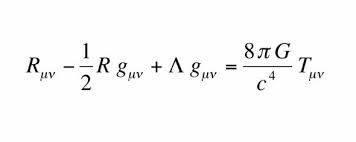
This equation (the Einstein Field Equation) describes how spacetime curvature is influenced by mass energy, forming the foundation of modern gravitational physics.
Key Concepts of General Relativity
Spacetime is Curved by Mass and Energy: Einstein proposed that instead of thinking of gravity as a force, we should think of it as the bending of spacetime. Imagine placing a heavy ball on a rubber sheet—the sheet curves under the ball’s weight, and smaller objects move along these curves. Similarly, planets and stars distort spacetime, and objects move along the paths dictated by this curvature.
The Equivalence Principle: One of the fundamental ideas behind general relativity is the equivalence principle, which states that the effects of gravity are indistinguishable from acceleration. This means that if you're in a sealed box, you wouldn't be able to tell whether you're being pulled by Earth's gravity or accelerating in deep space. This insight led Einstein to realize that gravity affects time itself—a phenomenon known as gravitational time dilation.
Gravitational Time Dilation: Time runs slower in stronger gravitational fields. For example, clocks on Earth run slightly slower than those on the International Space Station because the ISS is farther from Earth’s gravitational influence. This effect has been experimentally verified using atomic clocks placed at different altitudes. A practical application of this is GPS satellites, which must account for general relativity to maintain accurate positioning. Without these corrections, GPS systems would drift by several kilometers per day!
Light Bends Around Massive Objects: One of the first experimental confirmations of general relativity came from gravitational lensing, where light bends as it passes near massive objects like stars or galaxies. During a 1919 solar eclipse, astronomers observed starlight bending around the Sun exactly as Einstein predicted, proving his theory to the world. Today, gravitational lensing is used to map dark matter and study distant galaxies.
Black Holes and Singularities: Perhaps the most mind-blowing consequence of general relativity is the black hole—a region where spacetime is so warped that nothing, not even light, can escape.
At the heart of a black hole lies a singularity, a point of infinite density where the laws of physics break down. The discovery of actual black holes, including the famous first image of a black hole’s event horizon in 2019, confirms Einstein’s predictions in the most extreme conditions.
How General Relativity Changed Astrophysics
General relativity has transformed astrophysics in several ways. The discovery of gravitational waves, first detected by LIGO in 2015, confirmed Einstein’s prediction that space itself can ripple due to cosmic events like colliding black holes. The theory also underpins modern cosmology, helping explain the expansion of the universe and the role of dark energy. Additionally, it provides the foundation for understanding extreme objects like black holes and neutron stars, whose behaviors align perfectly with Einstein’s equations.
Did You Know?
The GPS system corrects for both special and general relativistic effects to keep your location accurate!
Einstein initially resisted the idea of black holes, believing they were a mathematical curiosity rather than real objects.
The first experimental proof of gravitational redshift (time running slower in strong gravity) was done in 1959 with the Pound-Rebka experiment at Harvard University.
The first image of a black hole was released in 2019 by the Event Horizon Telescope, a global network of radio telescopes.
Conclusion
General relativity is more than just a beautiful set of equations—it’s a theory that governs the universe on the grandest scales. From explaining black holes to shaping our understanding of space and time, Einstein’s masterpiece remains one of the most successful scientific theories ever developed.
And yet, mysteries remain. How does gravity fit into quantum mechanics? What lies inside a black hole? Is time travel possible? As we continue to explore the cosmos, Einstein’s ideas will undoubtedly guide us toward new discoveries, just as they have for over a century.
The universe bends to the weight of gravity, and thanks to Einstein, we now know why.
0 notes
Text
Dark Matter: The Invisible Mystery of the Universe
The universe is full of mysteries, but few are as perplexing as dark matter. Scientists estimate that dark matter makes up about 27% of the universe, yet it remains completely invisible and undetectable by conventional methods. Despite its elusiveness, dark matter plays a crucial role in shaping galaxies, influencing cosmic expansion, and defining the fundamental structure of the universe. In this blog, we'll explore what dark matter is, how we know it exists, and the ongoing efforts to uncover its true nature.
1. What Is Dark Matter?
Dark matter is a form of matter that does not emit, absorb, or reflect light, making it completely invisible to telescopes. Unlike ordinary matter, which consists of atoms, dark matter does not interact with electromagnetic forces, meaning it cannot be seen with any type of radiation (radio waves, infrared, X-rays, etc.).
Scientists believe that dark matter is made up of unknown, exotic particles that interact only through gravity and possibly the weak nuclear force. While its composition remains a mystery, its gravitational effects on visible matter reveal its presence.
2. How Do We Know Dark Matter Exists?
Even though dark matter is invisible, we can observe its gravitational effects on galaxies and cosmic structures. Here are some key pieces of evidence:
a) Galaxy Rotation Curves
In the 1970s, Vera Rubin and Kent Ford discovered that galaxies rotate much faster than expected. According to Newtonian physics, stars at the edges of a galaxy should move slower than those near the center. However, observations showed that outer stars moved at nearly the same speed as inner stars, implying the presence of an unseen mass—dark matter—exerting gravitational influence.
b) Gravitational Lensing
Massive objects, like galaxy clusters, can bend light from distant galaxies behind them, a phenomenon predicted by Einstein’s general relativity. The amount of bending observed in many cases suggests the presence of far more mass than what we can see, reinforcing the existence of dark matter.
c) Cosmic Microwave Background (CMB)
The Cosmic Microwave Background (CMB) is the afterglow of the Big Bang. Tiny fluctuations in the CMB, measured by missions like WMAP and Planck, reveal that the universe contains much more mass than visible matter alone can account for, supporting the presence of dark matter.
d) Large-Scale Structure Formation
Dark matter serves as the scaffolding for galaxy formation. Computer simulations show that without dark matter, galaxies and galaxy clusters would not have formed as they appear today. It acts like an invisible glue that holds large cosmic structures together.
3. What Could Dark Matter Be Made Of?
Scientists have proposed several candidates for dark matter, including:
WIMPs (Weakly Interacting Massive Particles) – These hypothetical particles interact via gravity and the weak nuclear force, making them difficult to detect.
Axions – Extremely light particles that could explain dark matter through their quantum properties.
Sterile Neutrinos – A theoretical type of neutrino that interacts only through gravity.
Modified Gravity Theories – Some alternative theories suggest that our understanding of gravity itself may need revision, potentially eliminating the need for dark matter.
4. How Are Scientists Searching for Dark Matter?
Despite its invisibility, scientists are using various methods to detect dark matter indirectly:
Underground Detectors: Experiments like XENON, LUX, and SuperCDMS are searching for faint interactions between dark matter particles and ordinary matter.
Particle Colliders: The Large Hadron Collider (LHC) at CERN attempts to create dark matter particles in high-energy collisions.
Astrophysical Observations: Telescopes like the James Webb Space Telescope (JWST) and surveys like DES (Dark Energy Survey) analyze gravitational effects that could hint at dark matter’s presence.
5. The Connection Between Dark Matter and Dark Energy
While dark matter makes up about 27% of the universe, another mysterious component—dark energy—accounts for 68%. Unlike dark matter, which pulls galaxies together through gravity, dark energy pushes the universe apart, driving its accelerated expansion. The relationship between these two unknown forces remains one of the biggest puzzles in cosmology.
6. The Future of Dark Matter Research
The search for dark matter is one of the greatest scientific challenges of the 21st century. Future space missions, particle physics experiments, and improved observational techniques may bring us closer to unlocking this cosmic enigma. If we discover the true nature of dark matter, it could revolutionize our understanding of physics and the universe itself.
Conclusion
Dark matter remains one of the most profound unsolved mysteries in science. Though we cannot see it, its gravitational fingerprints are imprinted across the cosmos. Whether it is made of exotic particles or represents a deeper flaw in our understanding of gravity, one thing is certain unraveling the mystery of dark matter will reshape our view of the universe and our place within it.
What do you think dark matter is? Could it be a completely new form of physics waiting to be discovered? Let’s discuss in the comments!
0 notes
Text
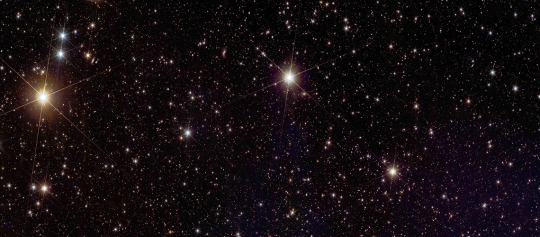
Einstein’s equations collide with the mysteries of the Universe
A French-Swiss team tests the famous physicist’s predictions by calculating the distortion of time and space
Why is the expansion of our Universe accelerating? Twenty-five years after its discovery, this phenomenon remains one of the greatest scientific mysteries. Solving it involves testing the fundamental laws of physics, including Albert Einstein’s general relativity. A team from the universities of Geneva (UNIGE) and Toulouse III – Paul Sabatier compared Einstein’s predictions with data from the Dark Energy Survey. Scientists discovered a slight discrepancy that varies with different periods in cosmic history. These results, published in Nature Communications, challenge the validity of Einstein’s theories for explaining phenomena beyond our solar system on a universal scale.
According to Albert Einstein’s theory, the Universe is deformed by matter, like a large, flexible sheet. These deformations, caused by the gravity of celestial bodies, are called ‘‘gravitational wells’’. When light passes through this irregular framework, its trajectory is bent by these wells, similar to the effect of a glass lens. However, in this case, it is gravity, not glass, that bends the light. This phenomenon is known as ‘‘gravitational lensing’’.
Observing it provides insights into the components, history, and expansion of the Universe. Its first measurement, taken during a solar eclipse in 1919, confirmed Einstein’s theory, which predicted a light deflection twice as large as that predicted by Isaac Newton. This difference arises from Einstein’s introduction of a key new element: the deformation of time, in addition to the deformation of space, to achieve the exact curvature of light.
Theory vs. Data
Are these equations still valid at the edge of the Universe? This question is being explored by many scientists seeking to quantify the density of matter in the cosmos and to understand the acceleration of its expansion. Using data from the Dark Energy Survey—a project mapping the shapes of hundreds of millions of galaxies—a team from the universities of Geneva (UNIGE) and Toulouse III – Paul Sabatier is providing new insights.
‘‘Until now, Dark Energy Survey data have been used to measure the distribution of matter in the Universe. In our study, we used this data to directly measure the distortion of time and space, enabling us to compare our findings with Einstein’s predictions,’’ says Camille Bonvin, associate professor in the Department of Theoretical Physics at the UNIGE Faculty of Science, who led the research.
A Slight Discrepancy
The Dark Energy Survey data allow scientists to look deep into space and, therefore, far into the past. The French-Swiss team analysed 100 million galaxies at four different points in the Universe’s history: 3.5, 5, 6, and 7 billion years ago. These measurements revealed how gravitational wells have evolved over time, covering more than half of the cosmos’s history.
‘‘We discovered that in the distant past — 6 and 7 billion years ago — the depth of the wells aligns well with Einstein’s predictions. However, closer to today, 3.5 and 5 billion years ago, they are slightly shallower than predicted by Einstein,’’ reveals Isaac Tutusaus, assistant astronomer at the Institute of Research in Astrophysics and Planetology (IRAP/OMP) at Université Toulouse III - Paul Sabatier and the study’s lead author.
It is also during this period, closer to today, that the expansion of the Universe began to accelerate. Therefore, the answer to two phenomena—the acceleration of the Universe and the slower growth of gravitational wells—may be the same: gravity could operate under different physical laws at large scales than those predicted by Einstein.
Challenging Einstein?
‘‘Our results show that Einstein’s predictions have an incompatibility of 3 sigma with measurements. In the language of physics, such an incompatibility threshold arouses our interest and calls for further investigations. But this incompatibility is not large enough, at this stage, to invalidate Einstein’s theory. For that to happen, we would need to reach a threshold of 5 sigma. It is therefore essential to have more precise measurements to confirm or refute these initial results, and to find out whether this theory remains valid in our Universe, at very large distances,’’ emphasizes Nastassia Grimm, postdoctoral researcher in the Department of Theoretical Physics at UNIGE and co-author of the study.
The team is preparing to analyse new data from the Euclid space telescope, launched a year ago. As Euclid observes the Universe from space, its measurements of gravitational lensing will be significantly more precise. Additionally, it is expected to observe about 1.5 billion galaxies within the six years of the mission. This will enable more accurate measurements of space-time distortions, allowing us to look further back in time and ultimately test Einstein’s equations.
IMAGE: Gravitational lensing of distant galaxies by the galaxy cluster Abell 2390, observed by the Euclid satellite. © ESA/Euclid/Euclid Consortium/NASA, image processing by J.-C. Cuillandre (CEA Paris-Saclay), G. Anselmi
4 notes
·
View notes
Text
James Webb telescope spies record-breaking hoard of stars hiding in a warped 'dragon' galaxy
The Dragon Arc galaxy looks like a standard spiral galaxy with a long tail of light, which has been magnified and distorted via a phenomenon known as gravitational lensing. (This image was captured by the Hubble Space telescope, not JWST.) (Image credit: NASA) Astronomers armed with exceptionally detailed James Webb Space Telescope (JWST) images have discovered dozens of ancient stars from a…
0 notes
Text
Could we turn the sun into a gigantic telescope?
Using a phenomenon known as gravitational lensing, it might be possible to use the sun as a gigantic telescope to peer deep into space. Continue reading Could we turn the sun into a gigantic telescope?
0 notes
Text
Anatomy of a Black Hole
Black holes are among the most enigmatic objects in the cosmos, extensively studied yet not completely understood. Contrary to their name, black holes are not actual holes but rather incredibly dense concentrations of matter compressed into very small regions. The gravity near their surface, known as the event horizon, is so powerful that nothing, not even light, can escape. Unlike Earth’s or the Sun’s surface, the event horizon isn’t a physical surface but a boundary enclosing all the matter of the black hole. While there’s still much to learn about black holes, such as the nature of matter within their event horizons, scientists have gathered significant knowledge about them. Black holes do not emit or reflect light, rendering them effectively invisible to telescopes. Researchers primarily study black holes through their impact on surrounding matter: Black holes can be encircled by rings of gas and dust, known as accretion disks, which emit light across various wavelengths, including X-rays. The intense gravity of a supermassive black hole can cause stars to orbit it in specific patterns. Observations of star orbits near the Milky Way's center provided evidence of a supermassive black hole, a discovery that earned the 2020 Nobel Prize. When massive objects accelerate through space, they produce ripples in space-time known as gravitational waves, detectable by their effects on specialized instruments. Massive objects like black holes can also bend and distort light from more distant sources, a phenomenon called gravitational lensing, which helps scientists detect otherwise invisible black holes
0 notes